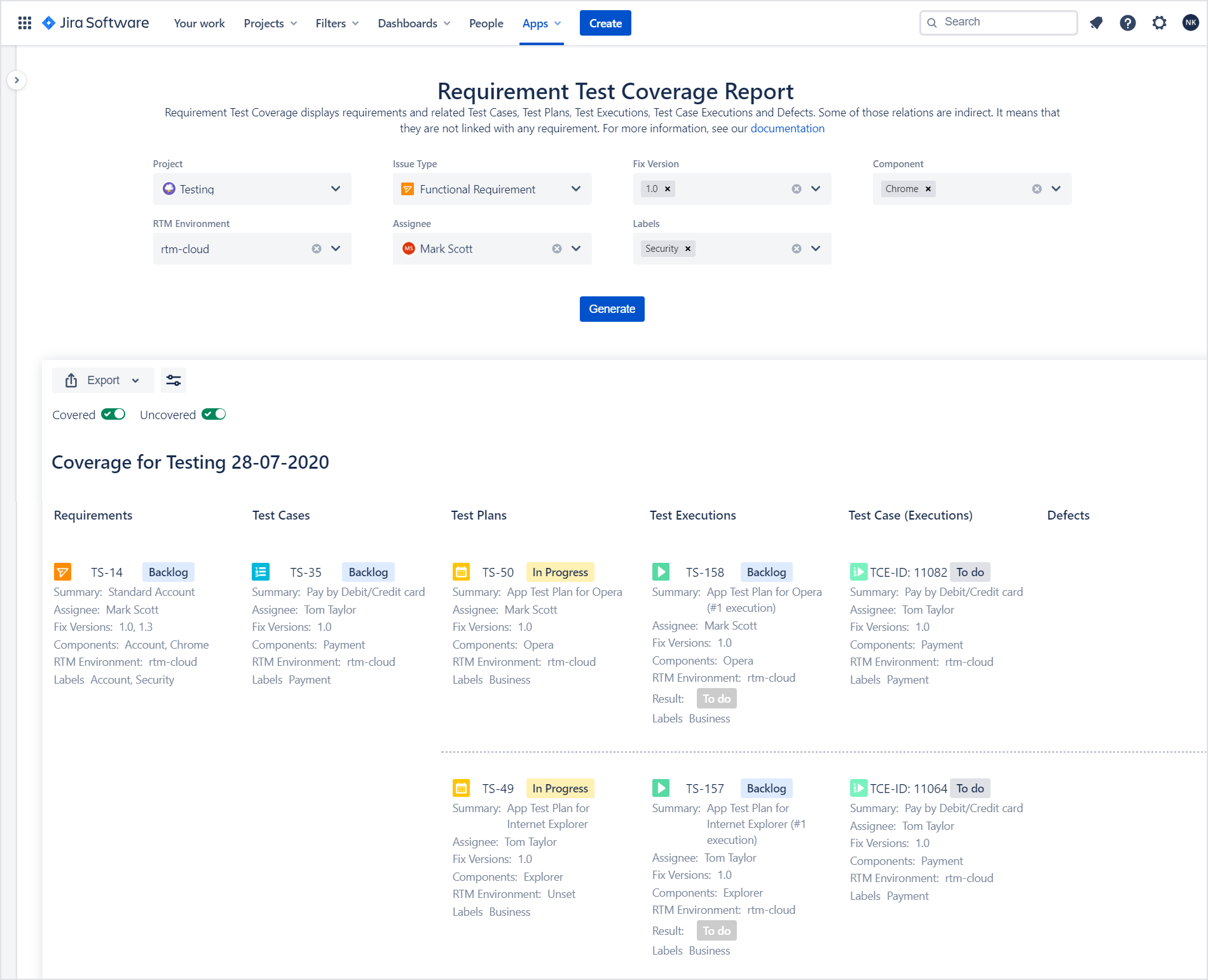You may be experiencing slow load times on the forum; the team is working to resolve this ASAP.
×Community resources
Community resources
Requirements management in Jira. The ultimate best practices guide (2024)
The biggest challenge in Agile projects is ensuring everyone is on the same page with requirements.
Teams often face confusion and miscommunication. Is there a way to simplify this?
Fortunately, the answer is: yes. Adopting effective requirements management in Jira can truly transform the way your team works.
Here are some best practices worth implementing into your project:
Step 1: Establish clear project goals and objectives
Define the project’s specific goals and objectives from the outset. This clarity helps guide all further efforts and helps to understand the direction of the project.
Documented requirements with linked issues in the Requirements and Test Management for Jira.
Step 2: Create a consistent documentation template
Develop a standardized template for documenting requirements. Consistency in format and terminology simplifies communication among team members and stakeholders. It makes it easier to track and manage requirements.
Ready-to-use requirements template available in the Requirements and Test Management for Jira.
Step 3: Gather requirements from stakeholders
Collect information from stakeholders, users, and other sources to identify their needs. Use various methods such as interviews, surveys, and workshops to ensure comprehensive requirements coverage.
Step 4: Analyze and document requirements
After gathering information, analyze the requirements for clarity, completeness, and consistency. Document the analyzed requirements in clear statements that describe the functionality, goals, and features of the product or system.
Step 5: Prioritize requirements based on importance
Define and prioritize the requirements based on their importance, urgency, and feasibility. This prioritization helps in making informed decisions about resource allocation and project planning.
Issue field that allows you to set the priority of the requirements in the Requirements and Test Management for Jira.
Step 6: Validate requirements with stakeholders
Create a validation plan to review the requirements before implementation. Engage stakeholders in discussions to make sure that the documented requirements align with their expectations.
Step 7: Promote transparency in documentation
Share your requirements openly with everyone involved in the project. Transparency prevents confusion and guarantees that all team members are on board with the project’s goals.

Clearly display requirements relations with test cases and other testing objects with Requirement Test Coverage report in Requirements and Test Management for Jira
Step 8: Emphasize active listening
Practice active listening when interacting with stakeholders. Truly understanding their perspective makes the requirements collected accurate and meaningful.
Step 9: Acknowledge that perfection is unattainable
Achieving perfection in requirements gathering is impossible. Aim for clarity and completeness, but be prepared to adapt and improve as new insights arise.
Summary
These requirements management best practices are essential for driving project success. Start by establishing clear goals and objectives, and create a standardized documentation template for consistency.
Engage actively with stakeholders to gather insights and validate requirements. Check alignment with their needs. Promote transparency in documentation and practice active listening to avoid misunderstandings.
Lastly, recognize that while striving for clarity is important, perfection is unattainable. Always be prepared to adapt and improve throughout the project lifecycle.
Was this helpful?
Thanks!
Katarzyna Kornaga [Deviniti]
3 comments